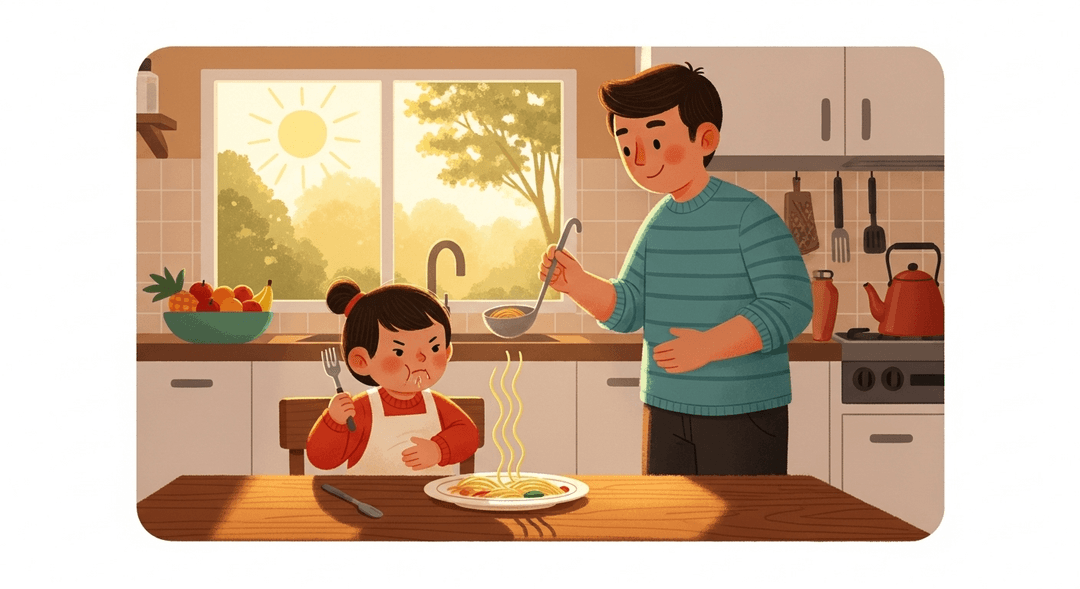Teach Portion Control
Portion control: because apparently, my child’s stomach is the size of a golf ball, not a bottomless pit like I thought. If you’ve ever watched your kid eat three noodles and declare ‘I’m full!’—while you wonder if you’re raising a future food critic—this one’s for you. Let’s get real about serving sizes and maybe, just maybe, avoid the daily food-waste guilt spiral (and the ‘just one more bite’ negotiations).
Teaching kids about portion sizes helps them tune into their own hunger and fullness cues, which sets them up for a healthy relationship with food and can help prevent overeating later in life. For parents, it’s a sanity-saver: less food waste, fewer power struggles, and more confidence that your kid isn’t secretly training for a competitive eating contest. Plus, research shows kids who learn portion awareness early are less likely to develop picky eating or emotional eating habits.
How to do it
-
Check a quick chart for your child’s age to determine appropriate serving sizes. If you don’t have one handy, you can search online for "toddler serving size" for a fast reference.
-
Serve small portions. A good rule of thumb is to offer about one tablespoon of each food per year of your child’s age.
-
Let your child ask for more if they’re still hungry. Avoid using guilt trips or bribes to encourage eating—trust their hunger cues.
-
Make portioning fun by turning it into a game. Use tiny bowls, colorful plates, or even an ice cube tray to serve food in playful ways.
-
Model healthy habits by serving yourself reasonable portions, too. This sets a good example, even if you might want to indulge after bedtime.
Tips:
- Kids’ appetites can vary from day to day—don’t stress if they eat less sometimes.
- Keeping mealtimes low-pressure helps children develop a healthy relationship with food.
- Remember, it’s normal for young children to need multiple exposures to new foods before they accept them.
